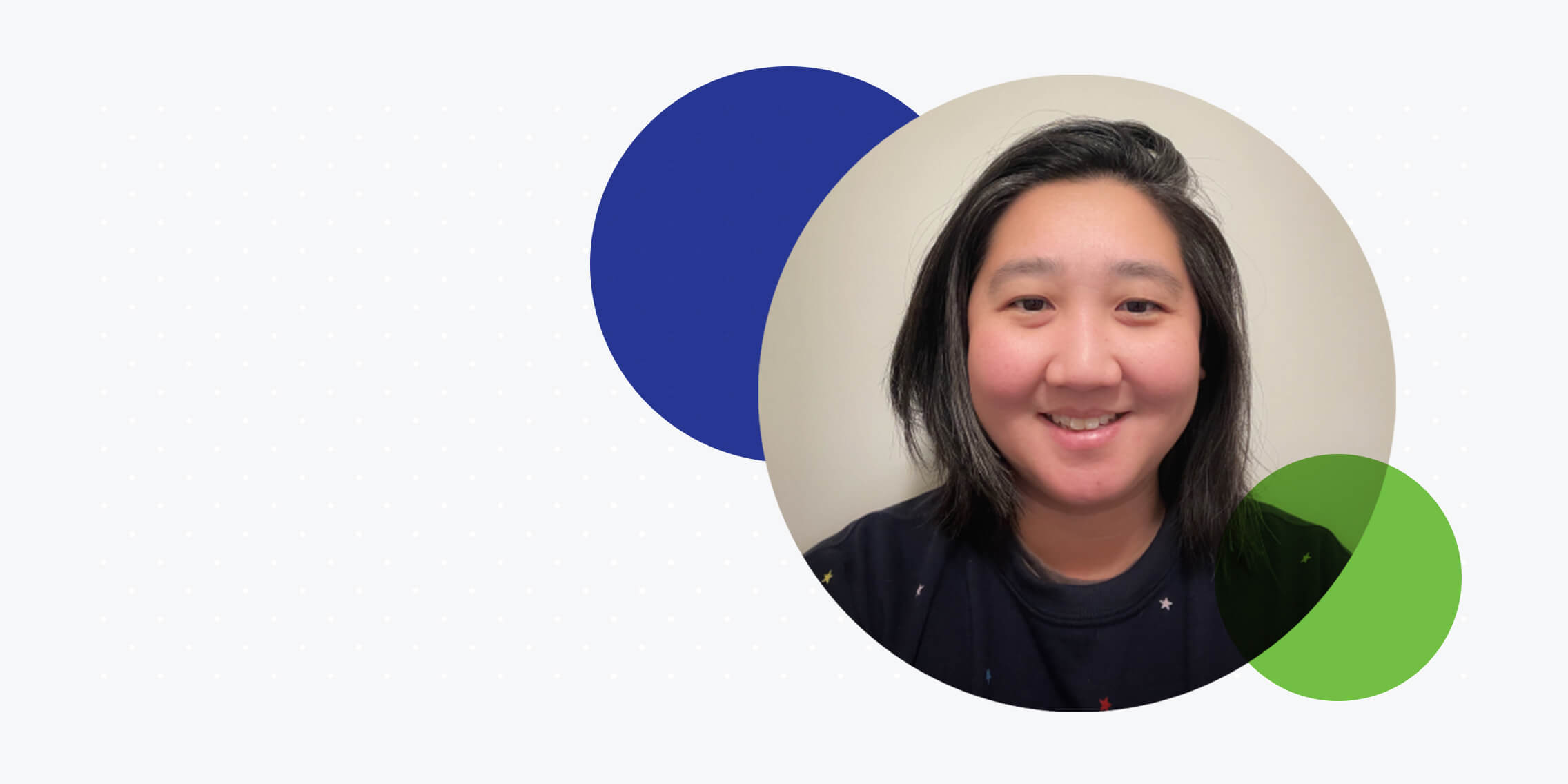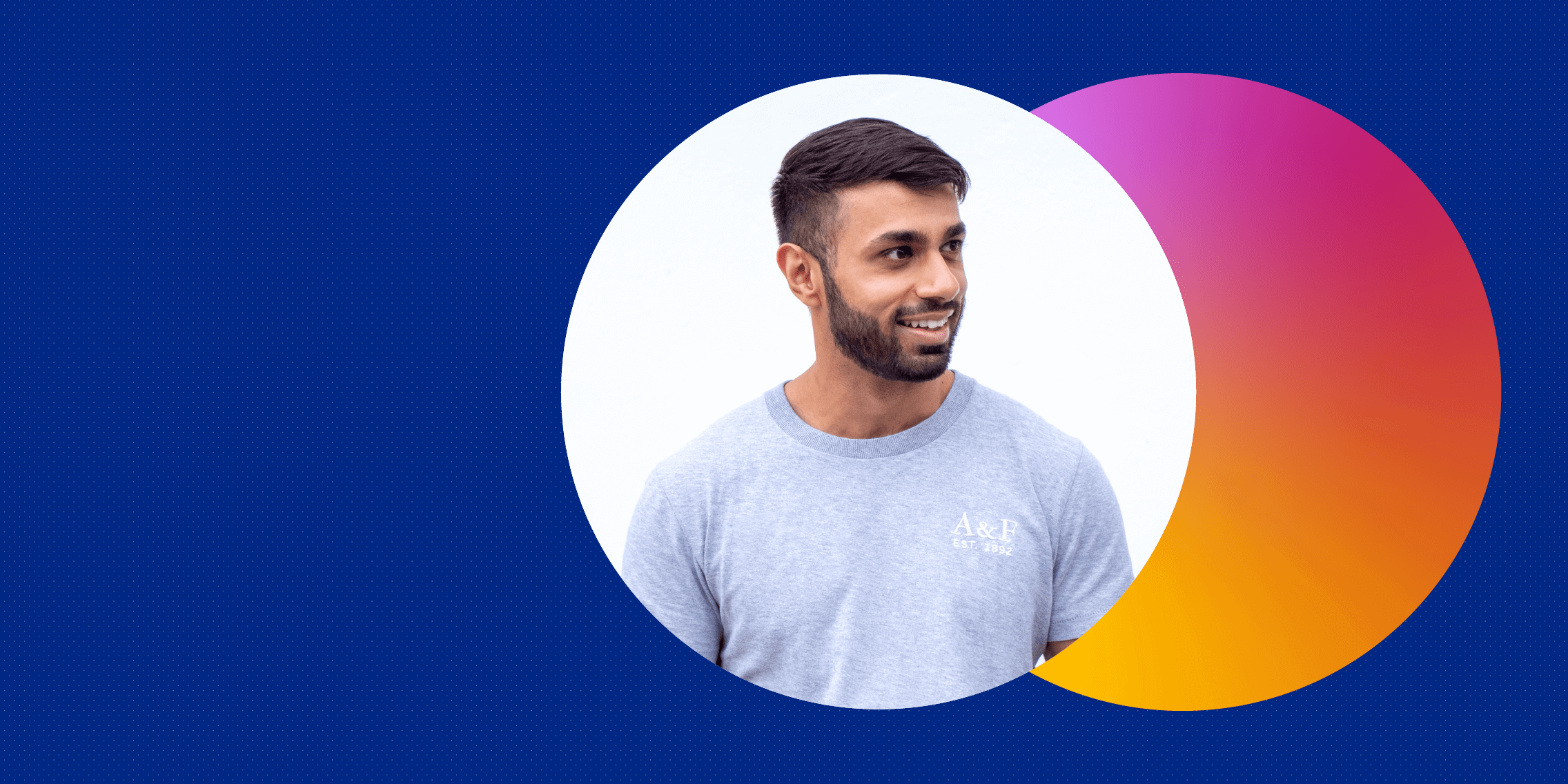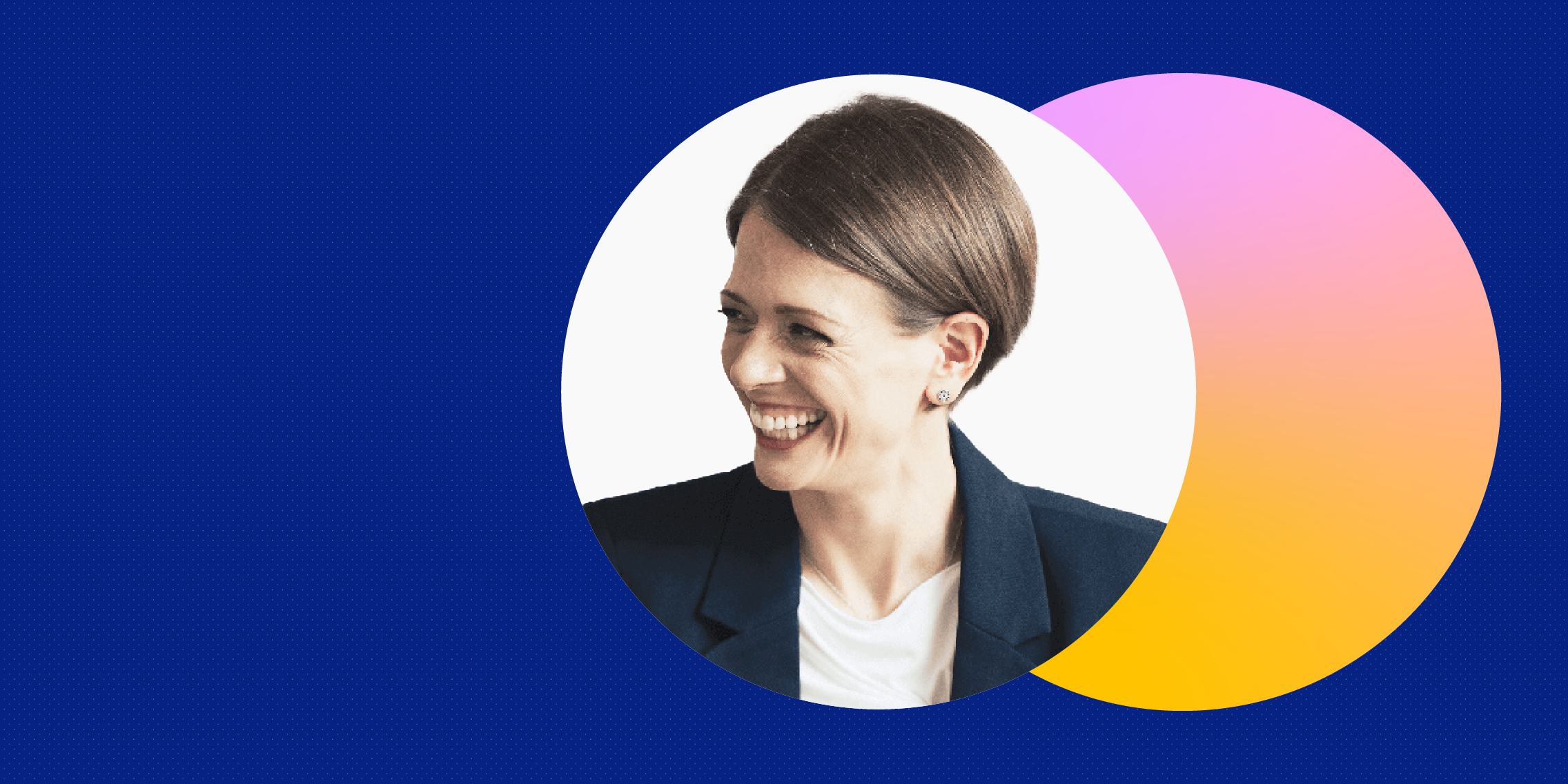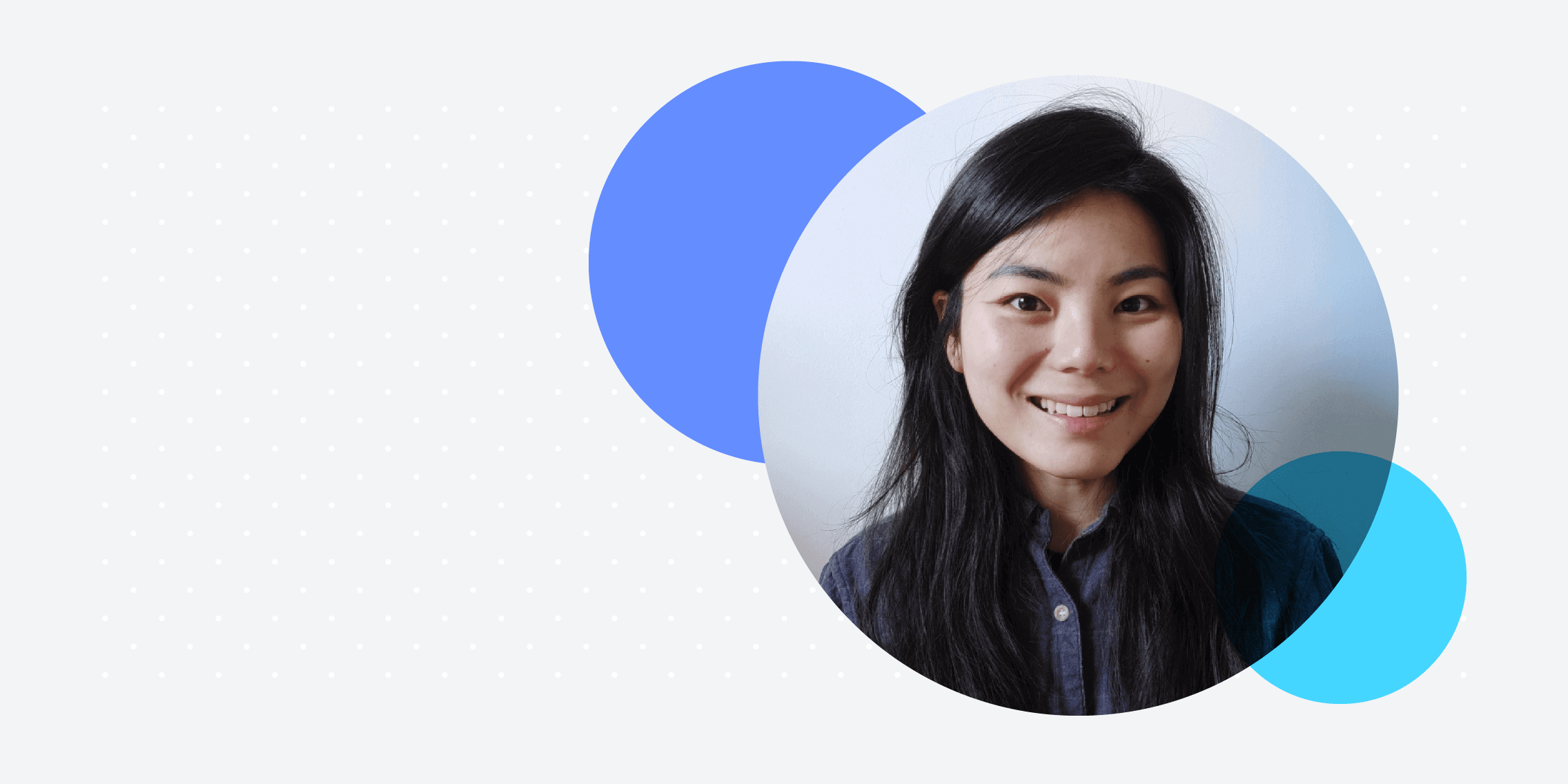What’s your career background?
It’s kind of long but I can summarise it as wide ranging forms of customer service, support and product support, both in person and in digital spaces. I worked in a university – so tertiary education – and with customer service and sales. I also did digital marketing and then moved across to insurance and the corporate sector, working with startups in early and middle stages. Now I am working with Vodafone as a UX designer.
I started the Professional Diploma in UX Design course in August 2021 and I finished it right before December. I took January off, took the exam in late February and got the job in April 2022, moving from customer care to UX.
Why did you decide to upskill in UX?
I finished an undergraduate and Masters degree in Classics, reading Latin and Greek at university. You come out of it asking “what am I going to do?” because there’s nothing that you fit into. You know, you study medicine and become a doctor or accounting and become an accountant. It’s a humanities field and in Liberal Arts, you study a whole bunch of stuff, like history, art, literature, and geography of the ancient world.
That sort of space is really interesting to me because you basically study society in an ancient setting and what you see from history is that although technology changes, we get more advanced, but the way people act and behave doesn’t actually change. We see that pattern and repetition when we speak to customers across different industries and different businesses – the same pattern always arises. You always try to find a way to solve the issue because you get the same sort of thing handed to you every single day.
So after a while, I started to hear about UX. It was on the periphery but not really in front of me. It wasn’t something that I was aware of but it got more and more prominent as people kept talking more about it.
The insurance company where I worked brought in two UX specialists and it introduced me to the sort of work that they do. That got me slightly more interested, so I then started to actively engage in UX. I took a hands-on approach to it so I could trial and see if that’s really what I wanted to do.
What research did you do into different UX courses?
There’s not a lot of boot camps for UX around the world but there’s one that started off in New Zealand and it is fully funded by the government. They are based in Auckland but they have a remote learning option as well. A week before my start date, they said that they didn’t have any more funding spots available and I wouldn’t be able to come in. So this presented me with the job of looking for a bootcamp or course that could give me the foundations of what I need to know.
I didn’t need to know everything at the offset because things always change. I just needed a course to give me good strong foundational knowledge of where to start with UX. I checked online to see what courses were available. I came across a few. There’s like CareerFoundry, the Google UX design course, General Assembly and the UX Design Institute.
I spent some time looking through all of them and I made a matrix with the schools and a list of features of what I wanted. I used that to decide which one to go for. What really caught my eye was the fact that although the UX Design Institute says it takes six months to complete, you had the flexibility to go over that six month date.
So if something else came up, you weren’t bound to that time period. The flexibility really caught me there.
How did you find the course content from the UX Design Institute?
It was really good. I was really impressed because I think on the website itself, you can see what’s being offered. It was really comprehensive and what I really liked was that you could see how it was broken down into modules before you enrol for the course – you can see the flow of what you’re going to be studying or being exposed to. And I really liked that. There were videos that you learn from, text to read and problems to solve. Most of it is video-based and I think Colman has a very easy way of talking. It doesn’t look like he’s talking from the scripts, it’s like he’s having a conversation with you. So I think that really helps as well. It gets you engaged in the content.
Was the course difficult without previous design experience?
Not at all. The only part I did not enjoy as much was sketching and it’s probably because it’s the first time I’ve done it. Obviously, the first time you do anything, like ride a bike, you’re not going to be exceptionally good. You’re gonna fall off the bike and absolutely hate it, right? So that was the module where we had to sketch your different iterations and ideas by hand. There were some obstacles and hurdles that I wasn’t aware of that I should have done before.
But, you know, the good thing about these sorts of experiences is that you learn from your mistakes. It didn’t go very well. I took such a long time to do this but that’s because maybe I should have made little cutouts of, let’s say, a call-to-action button and placed it on the sketch and taken a photo so I don’t have to redraw the whole page like 20 times. Just to have a template of all these things and lay them on the table like a jigsaw puzzle, so I can build a new picture each time. Towards the end of that process, that’s what I did. It was pretty late into the process but recently at work, I did it with an ideation thing as well. So I learned from that experience and I brought it with me to work.
It’s always a learning process. We never stop learning. It’s just whether we’re conscious that we’re learning or not. I think that’s the key difference. Even talking to you today, at the end of the conversation, you know, I’m gonna learn something from you today.
Considering the time difference between Ireland and New Zealand, how was the support during your studies?
I don’t think the time difference played into it because I was used to working remotely about a year and a half before the Covid-19 lockdown. With the support network with the UX/UI posts, it was mostly async for me, but it didn’t bother me so much. You know, you’d post questions and you get your answers. Maybe not immediately but as long as the answer has something of value and answers your question that works. You get the video recordings of the different webinars as long as you register so you don’t feel left out. You do it at your own time so that you’re comfortable and happy.
What’s been the biggest benefit of the course for you?
I think it’s knowledge. I picked up a lot in the times I’ve been working [in customer service], so I’ve been exposed to a lot of different things, but never really knew where they fit in or how they fit in and why you do things the way you do.
The course material explained a lot of it because then now I can use it as what I call foundational building blocks so I can use that as evidence for why I do X, Y and Z in a conversation with stakeholders, rather than I do this because it’s the voice inside my head.
Did the course contribute to you getting your job?
I had applied for UX jobs before starting the course itself and I didn’t get a lot of feedback – just lots of rejection letters. When I started the diploma, I still got rejection letters but I kept applying because why not? You already have a no anyway, so why not just go for it? You might get a yes. But halfway through the course I started to get, maybe one or two replies a month or something. An email back from the HR team to say “we’re interested, we’d like to have a chat with you”. And after I finished the course, I started to get more interviews.
The diploma helped me to get through that first hurdle because I know that it’s not the hiring manager that looks at your CV in the first place. It’s HR and then it goes to the hiring manager. But it’s still promising, coming from someone who had been trying to get into UX with no interviews, and suddenly landing those interviews.
How has the transition been going from customer service to UX?
Apart from speaking to customers in a totally different way, I guess it’s not that different. Only because I had always tried to solve their problems before and now I can actually try to help solve their problems as much as I can.
Now you have the tools now to actually solve their problems, whereas beforehand, you would have to contact somebody else to come in and solve the problem?
You’re totally right. Your hands are tied in a customer service space. I previously had a customer success job and customer success itself is like a crossover between customer service, product and UX because it takes into account all of these different things and you have slightly more power to make that change for the customer because you’re constantly collecting feedback and information. You’re constantly trying to loop that back in to make changes to the service or the product.
Any advice for those hoping to break into UX?
Don’t wait. If it’s something you are thinking about and passionate about, just go ahead and do it because even if you can’t make a massive change in a product or service, the smallest change itself can often make the biggest impact. If you’re working with something, you don’t see it that way, but it’s like the butterfly effect. It goes on and it could change someone’s day.




